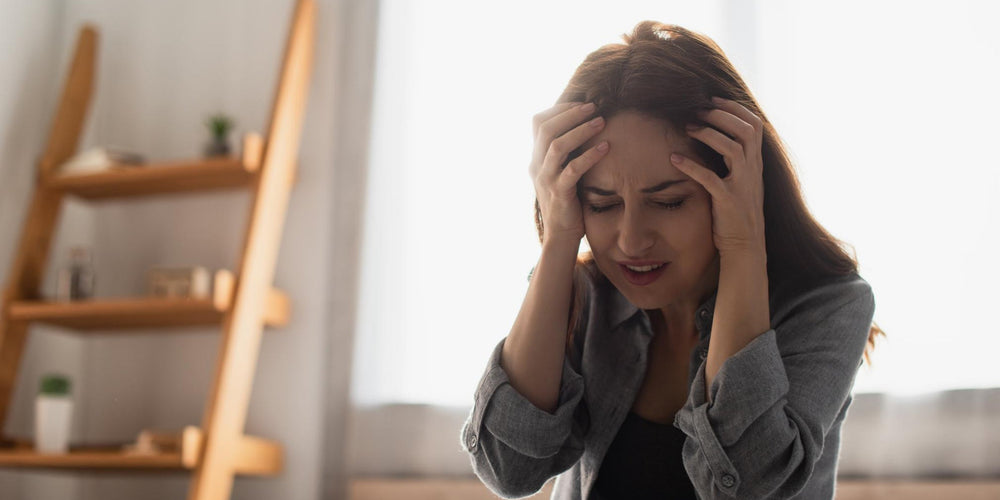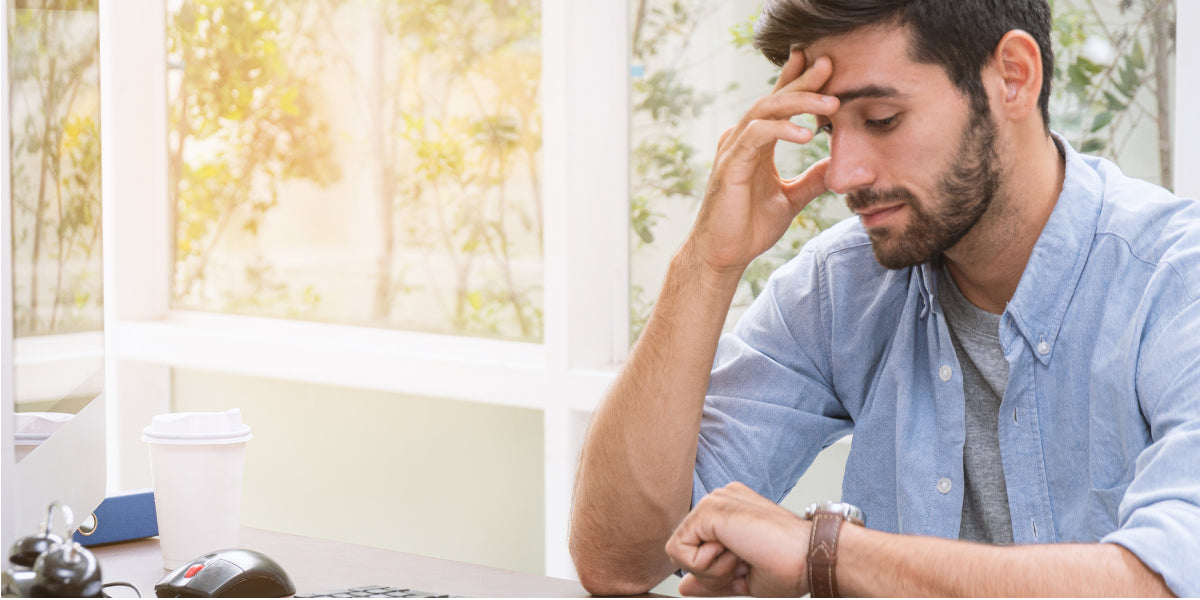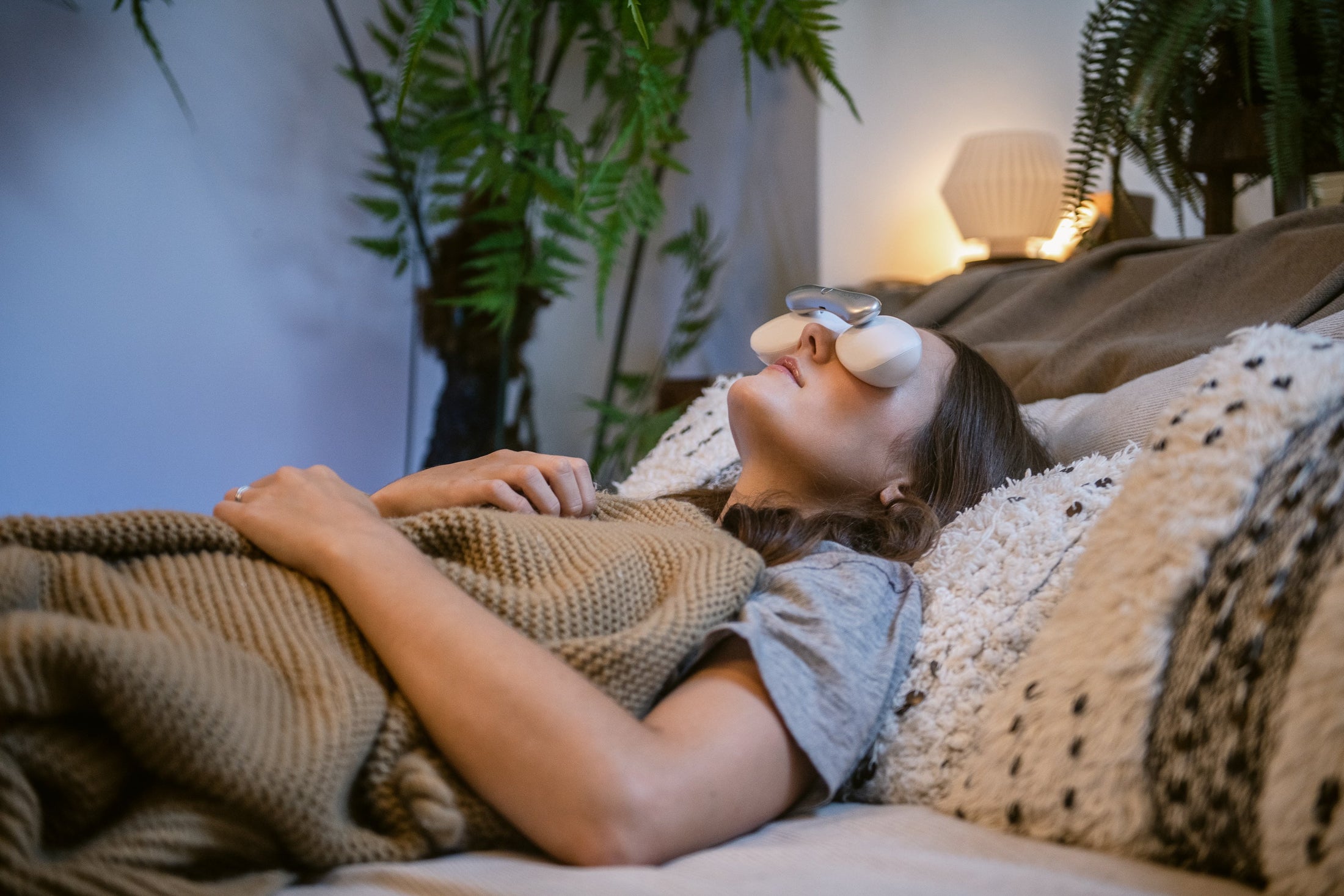The Headache of Worry: Unraveling the Anxiety-Headache Connection and Finding Relief

Stay tuned to our latest news
In today’s whirlwind of life, where the tempo of existence accelerates with each passing moment, anxiety often becomes an unwelcome yet familiar shadow, casting its gloom over our daily lives and manifesting itself as a relentless headache. Whether it’s the stress of meeting work deadlines, the constant barrage of social media notifications, or the worry over personal relationships, anxiety can take a toll on our mental and physical health. One of the most common physical manifestations of this mental turmoil is the onset of headaches, ranging from dull throbs to debilitating migraines.
The connection between anxiety and headaches is a complex interplay of psychological and physiological factors. When we’re anxious, our body’s fight-or-flight response kicks in, leading to a cascade of stress hormones that prepare us for perceived threats. This heightened state of alertness can cause muscle tension, particularly around the neck and head, paving the way for tension headaches. Furthermore, anxiety can disrupt our sleep, leading to a lack of rest and recovery, which is another contributing factor to headaches.
Understanding this intricate relationship is crucial, as it empowers us to seek effective strategies for relief. By exploring the underlying causes of anxiety-induced headaches and implementing preventative measures, we can hope to alleviate the discomfort and reclaim a sense of tranquility in our lives.
Connection Between Anxiety and Headaches

Anxiety and headaches have long been recognized as intertwined in a complex relationship. It is not uncommon for individuals dealing with anxiety to experience headaches on a frequent basis. In fact, headaches are often considered one of the most common physical symptoms of anxiety disorders.
The connection between anxiety and headaches can be attributed to various factors. Firstly, anxiety tends to increase muscle tension throughout the body, including the muscles in the head and neck. This heightened tension can lead to the development of tension headaches, which are often described as a dull, steady pain across the forehead or at the back of the head.
Furthermore, anxiety can trigger changes in blood flow and circulation. When a person feels anxious, the body's "fight or flight" response kicks in, causing increased heart rate and blood pressure. This surge of adrenaline can constrict blood vessels and reduce the amount of oxygen and nutrients reaching the brain, leading to headaches.
Another aspect contributing to the connection between anxiety and headaches is the heightened sensitivity to stimuli experienced by individuals with anxiety disorders. People with anxiety often have a hypersensitive nervous system, making them more prone to experiencing physical symptoms such as headaches in response to stressors or triggers.
Moreover, the psychological impact of anxiety cannot be overlooked. Persistent worry, fear, and stress associated with anxiety can lead to mental exhaustion and emotional strain. These psychological factors can manifest physically, resulting in tension headaches or migraines.
It is worth highlighting that the relationship between anxiety and headaches is not one-directional. While anxiety can contribute to the development or exacerbation of headaches, the presence of chronic headaches can, in turn, trigger or intensify anxiety symptoms. The person may develop anxiety about the constant discomfort and the impact it has on their daily life, leading to a cycle of anxiety and headaches.
Managing anxiety-related headaches involves addressing both the underlying anxiety and the physical symptoms. Seeking professional help from a healthcare provider or a mental health professional is crucial in understanding and managing anxiety disorders. Techniques such as relaxation exercises, cognitive-behavioral therapy (CBT), and stress management can help individuals reduce anxiety levels and subsequently alleviate headaches.
How Anxiety and Headaches Affect Daily Activities

Not only can anxiety-induced headaches severely impact daily activities, but it can also make even the simplest tasks feel like a daunting challenge. Many individuals suffer from the debilitating combination of anxiety and headaches, and it is essential to understand how these two conditions intertwine and the toll they take on one's daily life.
When anxiety strikes, it sets off a chain reaction in the body, triggering the release of stress hormones such as cortisol and adrenaline. These hormones cause a surge in blood pressure and heart rate, leading to tense muscles and increased levels of pain sensitivity. As a result, individuals with anxiety often experience frequent headaches or migraines.
The presence of headaches amplifies the distress caused by anxiety, creating a vicious cycle that further aggravates one's mental health. The pain and discomfort of a headache can intensify anxiety symptoms, leading to feelings of irritability, restlessness, and even panic attacks. In turn, these heightened anxiety symptoms can trigger more headaches, creating a self-perpetuating cycle that affects daily activities.
The impact of anxiety and headaches on daily activities can be far-reaching. For starters, the constant pain and discomfort can make it challenging to concentrate and focus on tasks at hand. Simple activities that used to come naturally, such as reading, working, or even having a conversation, can become overwhelming and exhausting.
Moreover, anxiety and headaches can lead to a decrease in productivity and a decline in overall quality of work. Constantly battling fatigue and pain, individuals find it difficult to perform at their usual level, which can result in missed deadlines, poor performance evaluations, and heightened stress levels.
The impact on social interactions should not be overlooked either. Anxiety can trigger feelings of self-consciousness and worry about what others might think, causing individuals to withdraw from social gatherings. Coupled with the intrusive symptoms of headaches, such as light sensitivity and noise intolerance, individuals often find it challenging to engage in social activities or maintain healthy relationships.
Physical exercise, which is vital for mental well-being and stress reduction, may also be negatively impacted. Fear of triggering a headache or exacerbating anxiety symptoms can discourage individuals from engaging in physical activities, further hindering their ability to manage stress and anxiety effectively.
If you find yourself experiencing headaches with anxiety, it is crucial to seek professional help. A healthcare provider, such as a doctor or a therapist, can develop an individualized treatment plan to address both conditions. This may involve a combination of medication, therapy, and lifestyle changes to manage anxiety symptoms and reduce the frequency and severity of headaches.
Breaking Free from the Anxiety-Headache Chain

To dismantle the debilitating cycle of anxiety-induced headaches, a comprehensive approach that targets both the mental strain and the physical symptoms is vital. Here are some expanded strategies that can offer significant relief:
Manage Stress
Mindfulness and Meditation
Mindfulness and meditation are not just practices but a way of living that invites us to be fully present in each moment. By engaging in mindfulness, we learn to observe our thoughts and feelings without judgment, which can often lead to a profound sense of peace. Meditation, on the other hand, allows us to delve deeper into the mind’s tranquility, providing a respite from the chaos of anxious thoughts. These practices can be particularly effective in the morning to set a positive tone for the day or in the evening to unwind. Over time, they can significantly reduce the frequency and intensity of headaches by lowering stress levels and promoting a state of relaxation.
Regular Exercise
Regular exercise is a cornerstone of physical and mental health. It’s not just about keeping the body fit; it’s about nurturing the mind as well. Activities such as brisk walking, cycling, or swimming are not only excellent for cardiovascular health but also for releasing endorphins, the body’s natural mood lifters. These endorphins can help alleviate the sensation of pain, serving as natural painkillers. Moreover, exercise can improve sleep quality, boost self-esteem, and provide a sense of accomplishment, all of which contribute to a reduction in anxiety levels and a lower likelihood of headache occurrence. Integrating exercise into your daily routine can be a game-changer for managing stress and enhancing overall well-being.
Improve Sleep Hygiene

Establish a Consistent Sleep Routine
A consistent sleep routine is the cornerstone of good sleep hygiene. It’s about more than just going to bed early; it’s about creating a rhythm that your body’s internal clock, or circadian rhythm, can synchronize with. By setting a regular bedtime and wake-up time, you signal to your body when it’s time to wind down and when it’s time to start a new day. This regularity can significantly improve the quality of your sleep, making you feel more rested and alert during the day. A well-rested mind is less prone to the stress that often triggers headaches, thus by maintaining a consistent sleep schedule, you can help reduce the frequency of headaches.
Crafting a Sleep-Inducing Bedroom Environment
The environment in which you sleep can have a significant impact on the quality of your rest. To create a restful sanctuary, start by examining the sensory inputs in your bedroom. Light, or the lack thereof, is crucial; using blackout curtains can block out unwanted light, signaling to your brain that it’s time for sleep. Sound plays a role as well; if you live in a noisy area, consider using earplugs or a white noise machine to drown out disruptive sounds. The temperature of your room is another factor; most people sleep best in a slightly cool environment, so adjust your thermostat to find the optimal temperature for you. By minimizing these disruptions, you can enhance the quality of your sleep, which is essential for both mental clarity and headache prevention.
Lifestyle Adjustments

Dietary Changes
A thoughtful approach to dietary habits can play a pivotal role in managing headache frequency. Reducing the intake of known headache triggers, such as caffeine and alcohol, is a proactive step towards this goal. Caffeine, while it can offer temporary alertness, often leads to rebound headaches as its effects wear off. Similarly, alcohol, particularly red wine, is a common trigger due to substances like histamines and tannins.
In addition to cutting back on these substances, ensuring adequate hydration is crucial. Dehydration can lead to the constriction of blood vessels in the brain, resulting in headaches. Therefore, drinking plenty of water throughout the day is essential.
Furthermore, a balanced diet that includes foods rich in magnesium, such as leafy greens, nuts, and seeds, can be beneficial. Magnesium plays a role in nerve transmission and has been shown to help prevent migraines. Omega-3 fatty acids, found in fish like salmon and flaxseeds, are also known for their anti-inflammatory properties, which can help reduce the frequency of headaches.
Relaxation Techniques
Integrating relaxation techniques into your daily routine can significantly reduce stress-related muscle tension, which often manifests as headaches. Practices such as yoga not only promote flexibility and strength but also encourage deep breathing and mental calmness, contributing to overall stress reduction.
@renphofan See the world with refreshed eyes with our revitalizing eye massager! #fyp #eyes #eyecare #world #refresh ♬ original sound - Renpho Fan
The RENPHO Eyeris 2 Eye Massager could be a beneficial tool for those suffering from anxiety-induced headaches. This device integrates massage, compression, and vibration with a newly designed kneading massage that targets the areas around the eyes. For individuals who experience headaches stemming from long days of work or study, the Eyeris 2 offers two levels of compression and heat settings that can be adjusted to increase a state of calm. The soothing heat option is particularly useful for alleviating symptoms like eye puffiness and dry eyes, which are often associated with stress and anxiety.
Moreover, the Eyeris 2 features a silent mode and Bluetooth connectivity, allowing users to listen to calming music or guided meditations, which can further aid in relaxation and potentially reduce the occurrence of headaches. Its user-friendly design, with adjustable straps and a soft, breathable leather lining, ensures comfort during use, making it easier to incorporate into a daily relaxation routine. By providing targeted relief and promoting relaxation, the RENPHO Eyeris 2 could be a supportive device for managing the physical manifestations of anxiety, such as headaches.
Deep-breathing exercises are another simple yet effective method to invoke relaxation. By focusing on taking slow, deep breaths, you can increase oxygen flow and trigger the body’s natural relaxation response.
Progressive muscle relaxation involves systematically tensing and then relaxing different muscle groups in the body. This technique helps in recognizing and releasing tension held in the muscles, which can be especially beneficial for those who experience tension headaches.
Seek Professional Help

Cognitive-Behavioral Therapy (CBT)
Cognitive-Behavioral Therapy (CBT) is a cornerstone of psychological intervention, particularly for those grappling with anxiety. This structured, time-limited therapy is grounded in the concept that our thoughts, feelings, and behaviors are interconnected, and that altering one can positively affect the others. CBT involves working with a therapist to identify and challenge unhelpful thought patterns and learn practical self-help strategies. These strategies are designed to bring about immediate positive changes in the quality of life, and over time, they can significantly reduce the occurrence of anxiety-induced headaches. CBT is not a one-size-fits-all remedy; it is tailored to each individual’s unique patterns of thinking and behavior, making it a highly personalized form of therapy.
Medication
While therapy can provide the tools to manage anxiety, medication may also play a role in stabilizing one’s psychological state. Anxiolytics, for instance, can provide rapid relief from acute episodes of anxiety, while antidepressants can help regulate the mood over a longer period. These medications can alter the brain’s chemistry and help mitigate the physical symptoms of anxiety, including headaches. It’s important to note that medication should be considered as part of a broader treatment plan, ideally one that includes therapy and lifestyle changes. A healthcare provider can offer guidance on the most appropriate medication, taking into account the individual’s health history and specific needs. With the right combination of therapy, medication, and self-care, it is possible to achieve a significant reduction in both anxiety and headaches.
Renpho Health Tips
-

5 Self-Care Practices for a Healthier Mind
May 10, 2023
Read more >
-

Feeling Stressed? Try These 7 Mood-Boosting Superfoods
April 4, 2023
Read more >
-

5 Signs You Need to Take a Break to Avoid Burnout
April 4, 2023
Read more >
-

Stress Reduction Tips for Busy Professionals
April 26, 2023
Read more >
-

Say Goodbye to Dry Eyes in 4 Ways
October 11, 2022
Read more >


